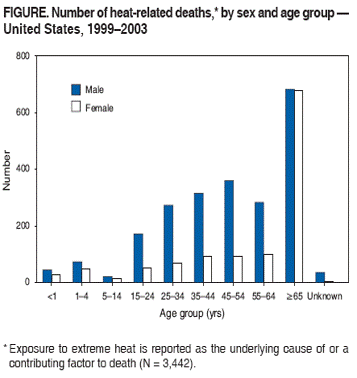Heat Illnesses and Acclimatization Guidelines
Click the link below to read the NATA Consensus statement on Treating Heat Illnesses
http://www.nata.org/sites/default/files/NATA09AnnualMeetingLeadRelease.pdf
“When an athlete undergoes a proper heat-acclimatization program, the body’s response to exercise and heat is improved, while
athletes not following a proper program face measureable risks for heat illness. A proper plan in
secondary school athletic programs is essential to minimize these risks.”
-Douglas J. Case, PhD, ATC, FACSM, FNATA
“Exertional heat stroke is the leading cause of preventable non-traumatic exertional sudden death for young athletes in the U.S. and studies strongly suggest that heat acclimatization appears to be one of the best strategies for reducing the risk of heat illness.”
-Francis G. O'Connor, MD, MPH
14 Day Acclimatization Period
•Initial 14 consecutive days of pre-season practice
•Goals: increase exercise heat tolerance
enhance the ability to exercise safely and effectively
reduce the risk of heat related injury
establish clear guidelines for high school athletics schedules
•All student athletes should complete, even if they join practice after the first day.
•Seven key recommendations
Definitions
•Practice is defined as the period of time a participant engages in a coach-supervised, school-approved, sport or conditioning related physical activity.
•Walk-through is defined as a teaching opportunity with the athletes not wearing protective equipment or using other sport related equipment.
•Recovery period is defined as the time between the end of one practice or walk-through and the beginning of the next.
Recommendation #1: During the first five days of the heat-acclimatization process, athletes may not practice in more than one practice per day.
Recommendation #2: If a practice is interrupted by inclement weather or heat restrictions, the practice should recommence once conditions are
deemed safem but total practice time should not exceed three hours per day.
Recommendation #3: A one-hour maximum walk-through is permitted during the first five days of the heat-acclimatization period; however, a
three-hour recovery period should be inserted between the practice and walk-through (or vice versa).
Recommendation #4: During the first two days of the heat-acclimatization period, in sports requiring helmets or shoulder pads, a helmet should
be the only protective equipment permitted (goalies, as in the case of field hockey and related sports, should not wear full
protective gear or perform activities that would require protective equipment). During days three through five, only helmets
and shoulder pads should be worn. Beginning on day six, all protective equipment may be worn and full contact may begin.
Recommendation #5: Beginning no earlier than the sixth day and continuing through the 14th day, double-practice days must be followed by a
single-practice day. On single-practice days, one walk-through is permitted, but it must be separated from the practice by at
least three hours of continuous rest. When a double-practice day is followed by a rest day, another double-practice day is
permitted after the rest day.
Recommendation #6: On a double-practice day, neither practice’s duration should exceed three hours total, and student-athletes should not
participate in more than five total hours of practice. Warm-up, stretching, cool-down, walkthrough, conditioning and
weight-room activities are included as part of the practice time. The two practices should be separated by at least three
continuous hours in a cool environment.
Recommendation #7: Because the risk of exertional heat illnesses during the pre-season heat-acclimatization period is high, the consensus
statement strongly recommends that an athletic trainer be on site before, during, and after all practices.
Heat Illnesses Include:
Heat Rash: red, raised rash accompanied with sensations of prickling and tingling during sweating. Skin wet with unevaporated sweat.
Heat Syncope: heat collapse, physical fatigue during over-exposure to heat
Exertional heat cramps: painful muscle spasms when physical fatigue is reached during over-exposure to heat.
Exertional heat exhaustion: results from dehydration: excessive thirst, dry mouth, weight loss, fatigue, weakness, incoordination, mental dullness. Rectal temp 101-104 with no evidence of Central Nervous System dysfunction.
Exertional heat stroke: Abrupt onset: CNS abnormalities: headache, vertigo, fatigue, flushed skin, decrease in sweating, pulse 160-180, temp 104, can lead to permanent brain damage or death (with circulatory collapse).
Exertional hyponatremia: worsening headache, nausea/vomiting, swelling in hands/feet, low blood sodium, compromised CNS. DO not rehydrate, EMS, sodium need to increase and fluid levels decrease.
Korey Stringer, an offensive tackle for the Minnesota Vikings, died of heat stroke on the second day of pre-season practice in 2001. He was only 27 years old at the time and was 6 foot four and weighed 335 pounds. On the day of Stringer’s death, it was in the mid 90’s with a heat index of 109 due to humidity. Stringer had already vomited three times during morning conditioning drills. This is particularly alarming because NATA recommends that any person exhibiting nausea, vomiting, headache, dizziness, or mental status change should be immediately evaluated for potential heat exhaustion or heat stroke by a health professional. His body temperature was 108.8 and he passed away 15 hours later, never regaining consciousness. Stringer was the first professional football player to die from heatstroke in the, then 82 year, history of the NFL.
Although football is a common focus when discussing heat illnesses, it is important to emphasize the fact that heat illnesses can occur during ANY sport activity.

During 1999--2003, a total of 3,442 deaths resulting from exposure to extreme heat were reported (annual mean: 688). Deaths among males accounted for 66% of deaths and outnumbered deaths among females in all age groups.
